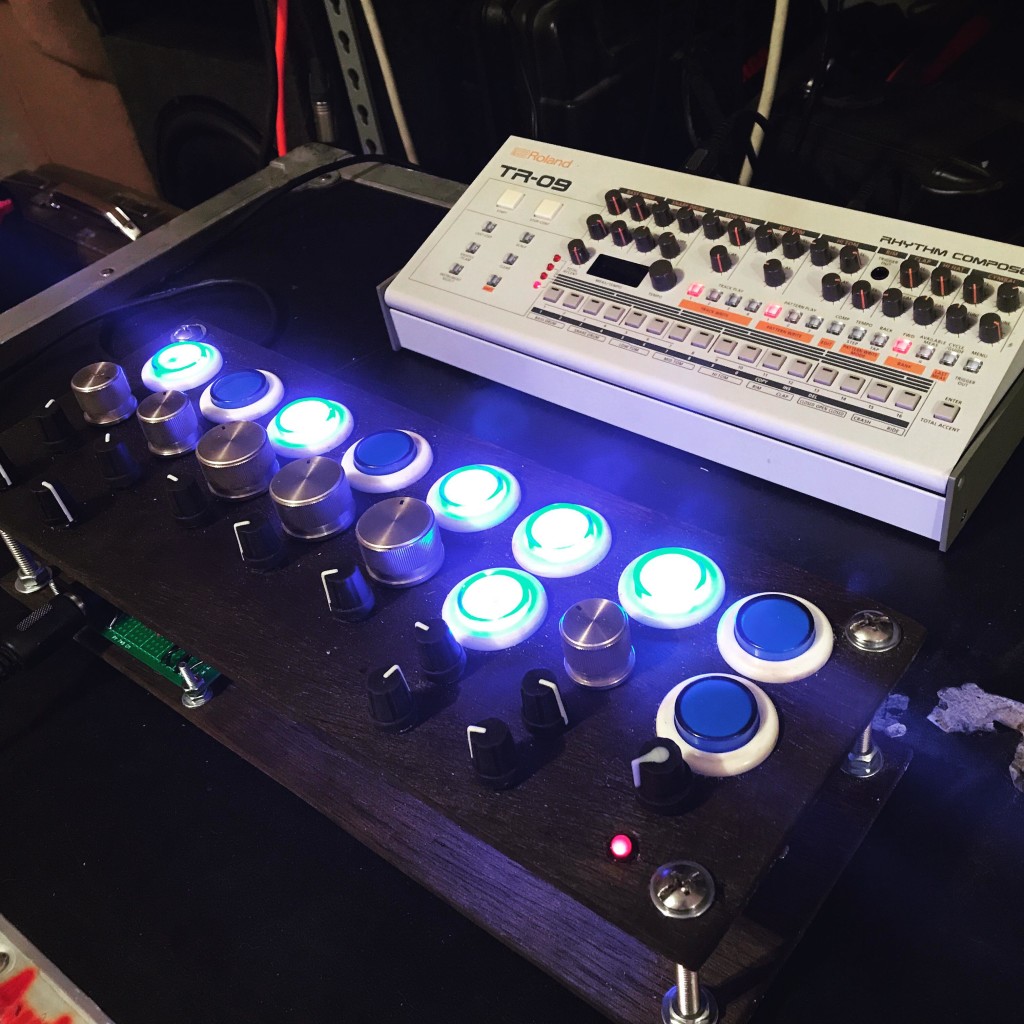Sometimes, when manufacturers don’t give us exactly what we need, a wonderful thing happens: people invent something to make up the difference.
In this case, while the solution involves Roland’s cute li’l TR-09, the resources here will be useful to anyone curious about making custom controllers – with or without pint-sized Roland drum machines.
Kyle Evans, aka pulseCoder, wanted more hands-on controls for live shows of the TR-09. Those tiny little pots on the machine just weren’t cutting it. The resulting build is beautiful and futuristic – partly because when you build stuff for yourself, you can lavish some extra expense on parts and not worry about pesky things like shipping weight and profit margins. (That’s one reason the DIYer will always, always have an edge over store-bought gear.)
But the other story here is, building this sort of controller has gotten a easier in the past few years than it used to be. Advancements like Arduino, Teensy, and kit-friendly multiplexers may not mean much to people building similar microcontroller-based projects some twenty years ago. But if you’re a musician and say something like “uh, what’s multiplexing?” – this is a nice leg up.
With live performances enjoying a nice renaissance on techno lineups and such, it seems the time is right for some tinkering. So here you go:
1. The Teensy LC microcontroller is the brains of the operation – it’s an easy, inexpensive, flexible chip you can program with the artist-friendly Arduino environment.
2. Multiplexing is a way way to use all those switches, pots, and LEDs without needing so many separate wires. And to help you prototype faster, hobbyist emporium Sparkfun makes a kit that handles just this problem:
3. The glue to make this work is a little bit of code. You can check out Kyle’s code as a model, especially if you’re also interested in making a TR-09 controller:
4. Power tools! It’s not a fun DIY project if you don’t get to do some drilling, satisfying the basic human need to make loud noises and accomplish stuff. Kyle tells CDM: “these arcade switched are not illuminated by default, I drilled holes in the bottom of the plastic casing and added LEDs ?”
Here’s a look at that finished build:
